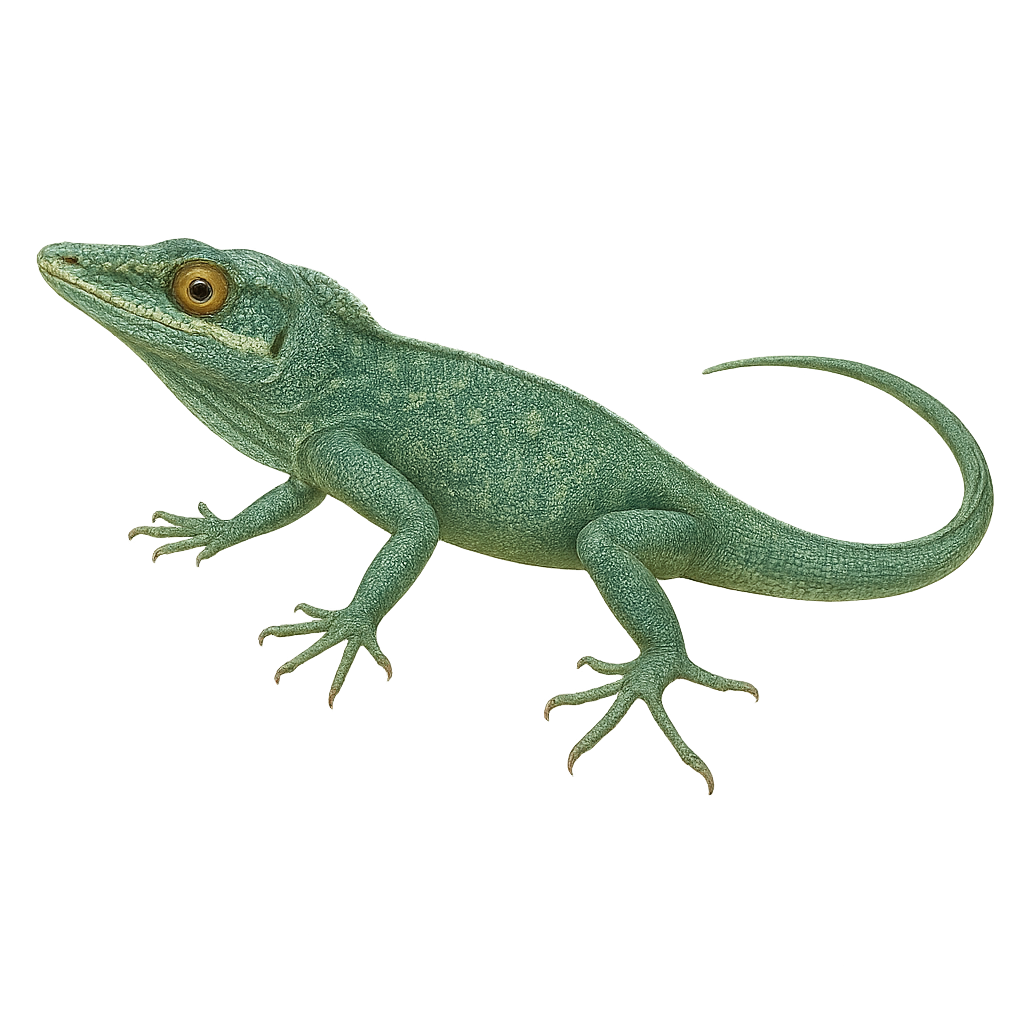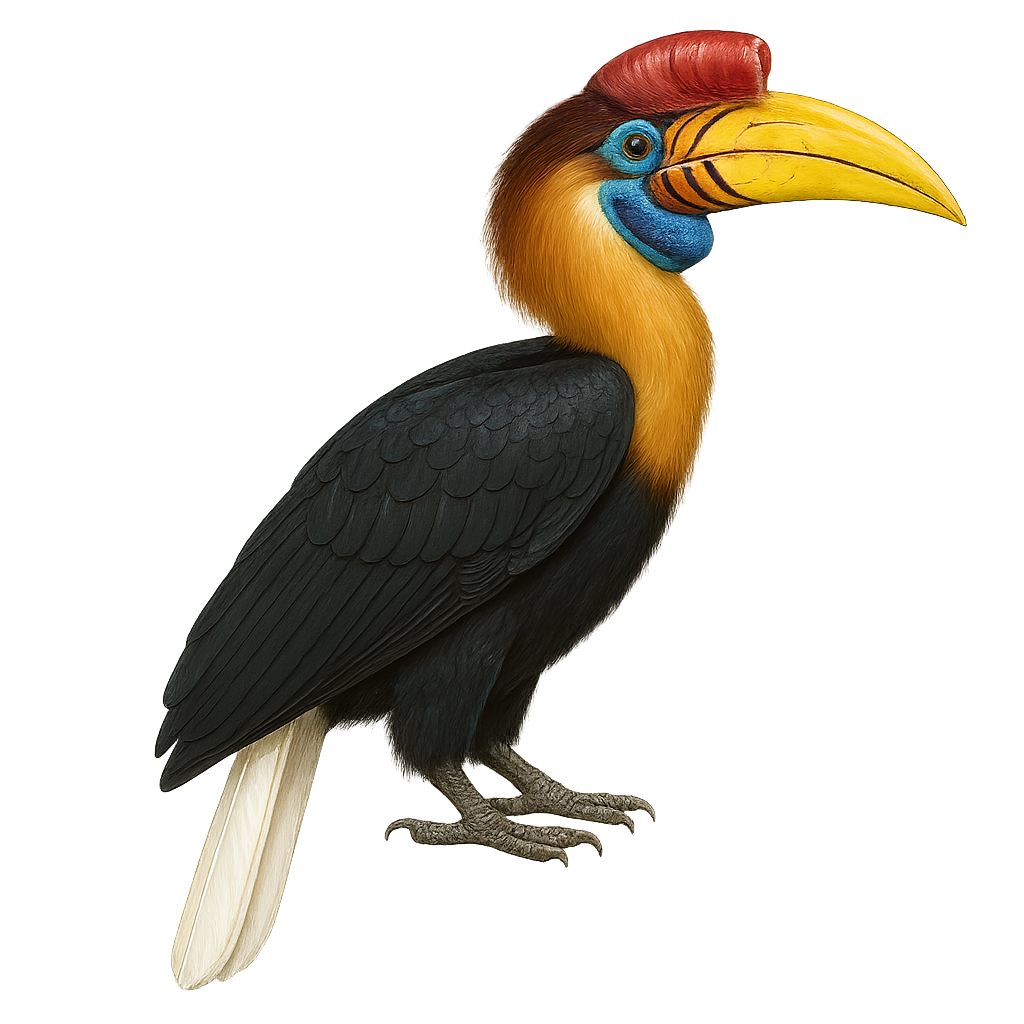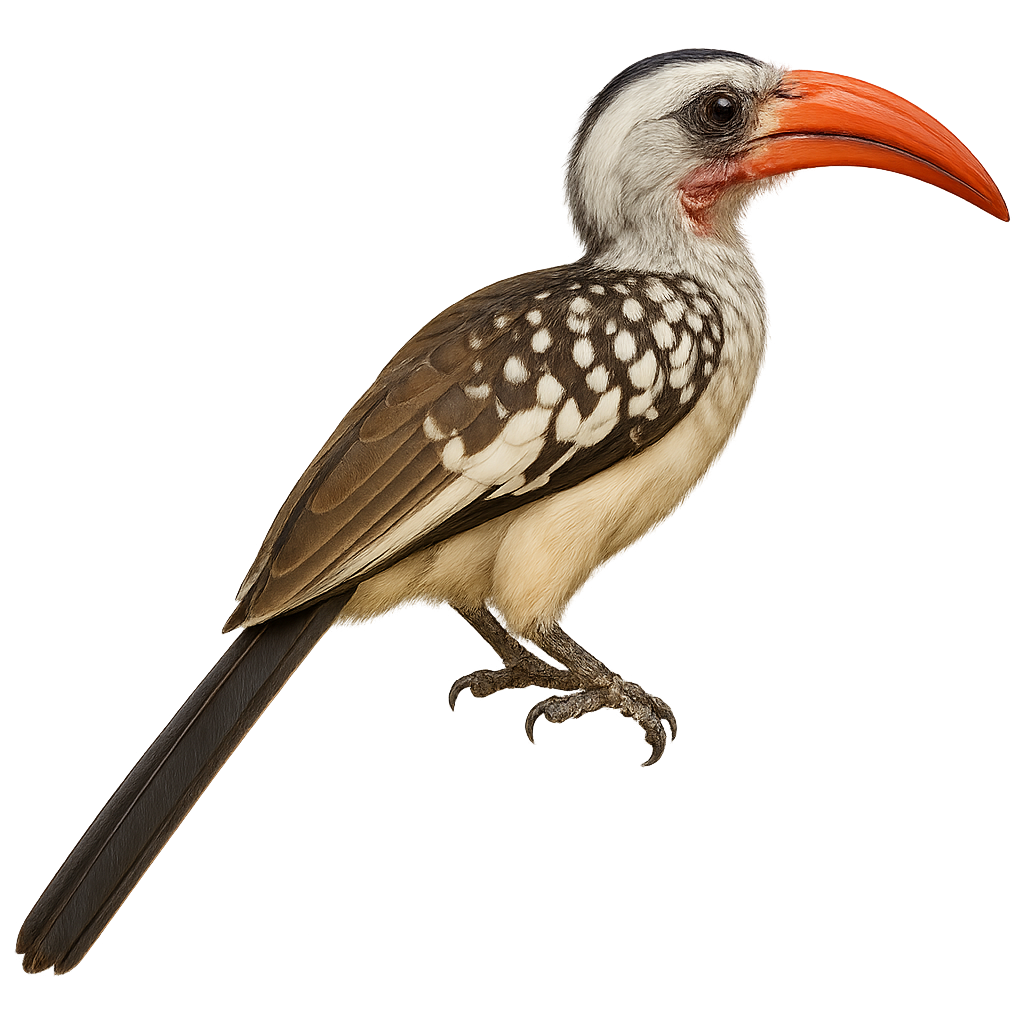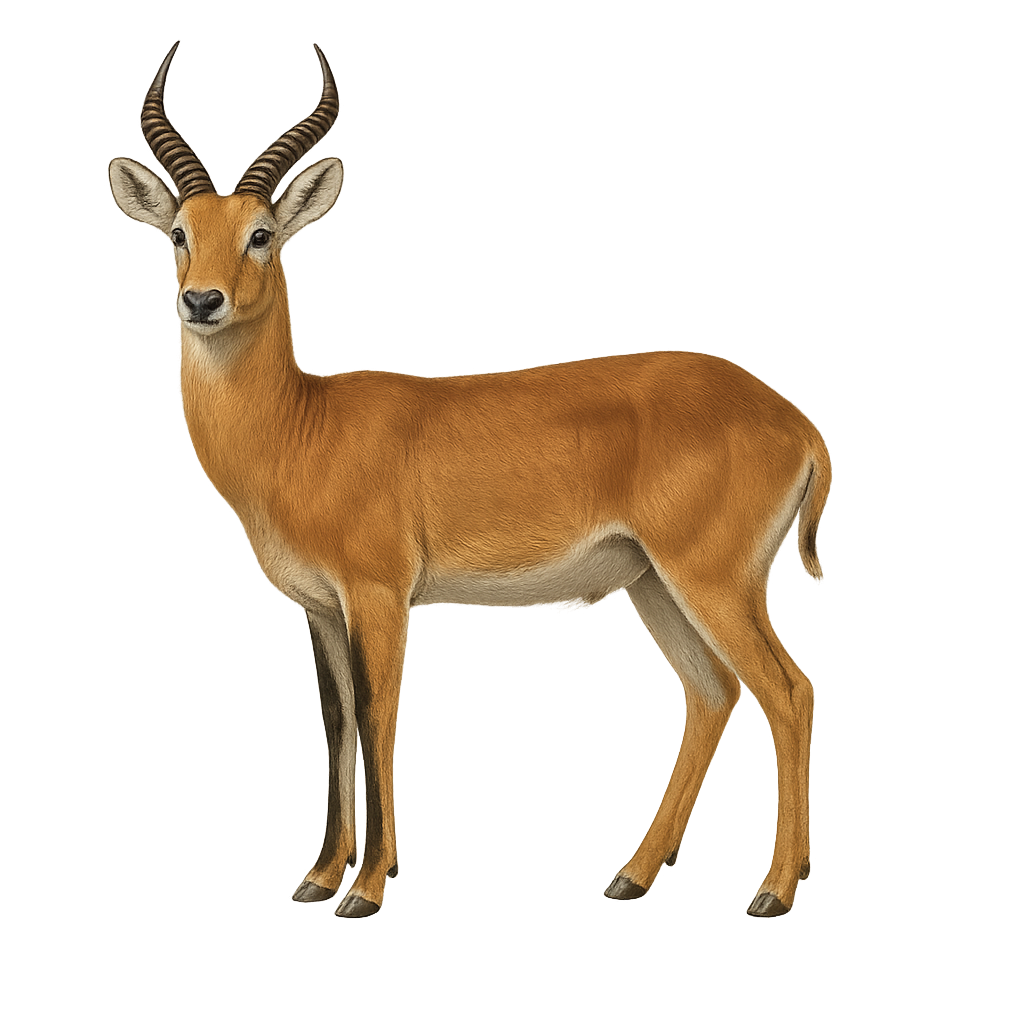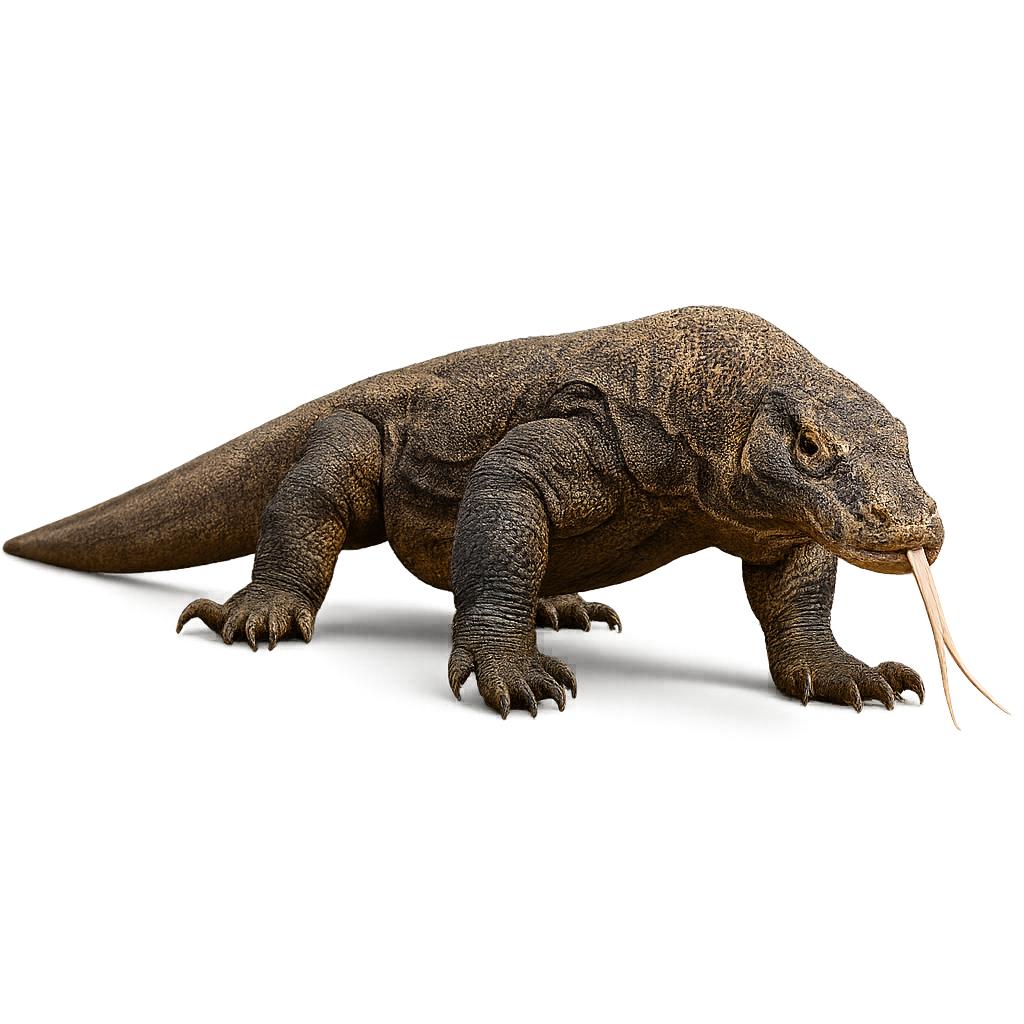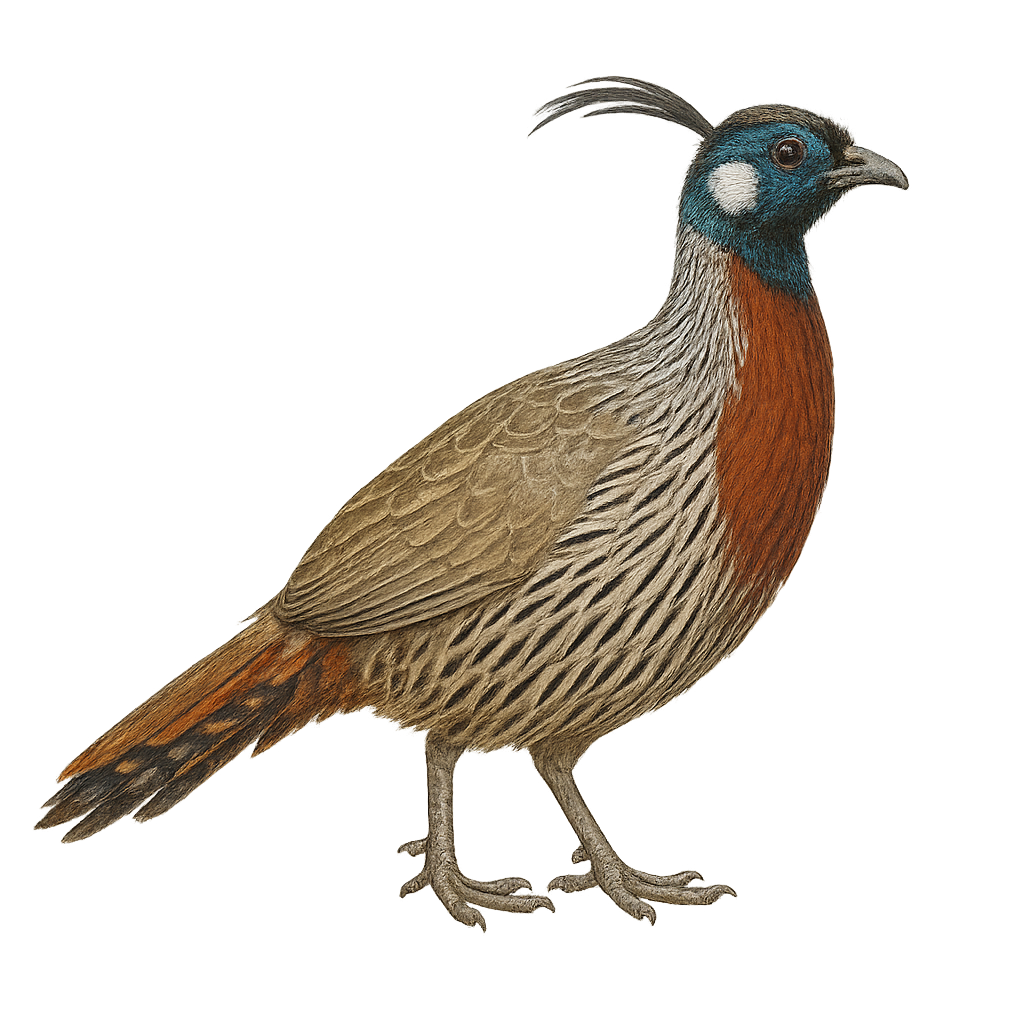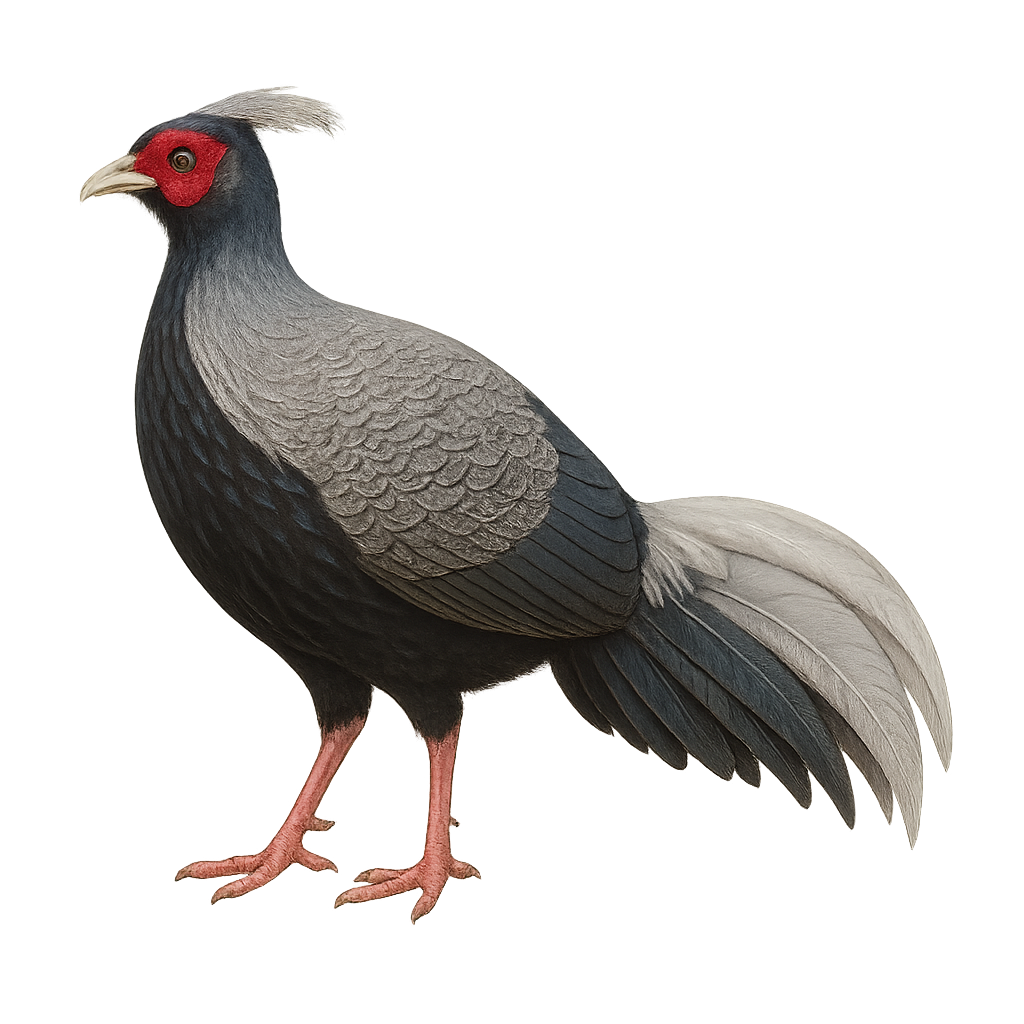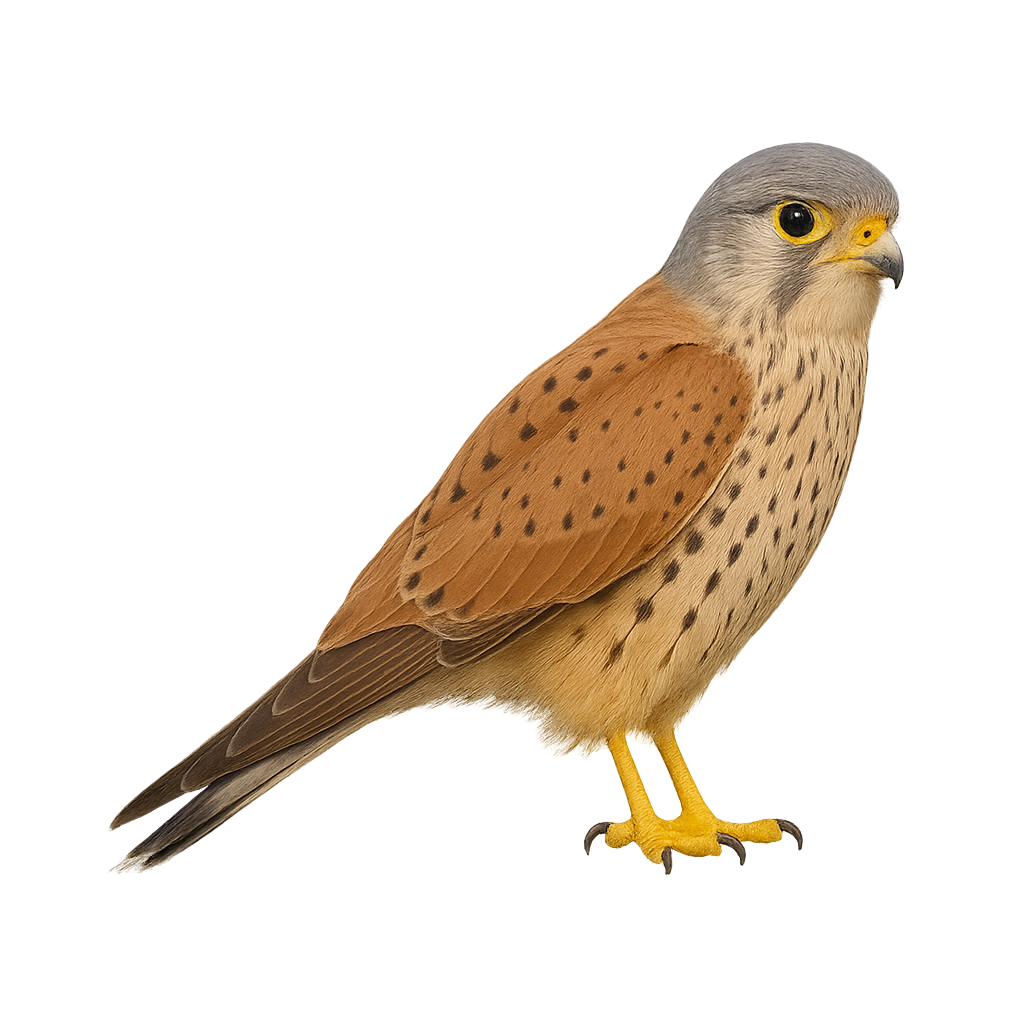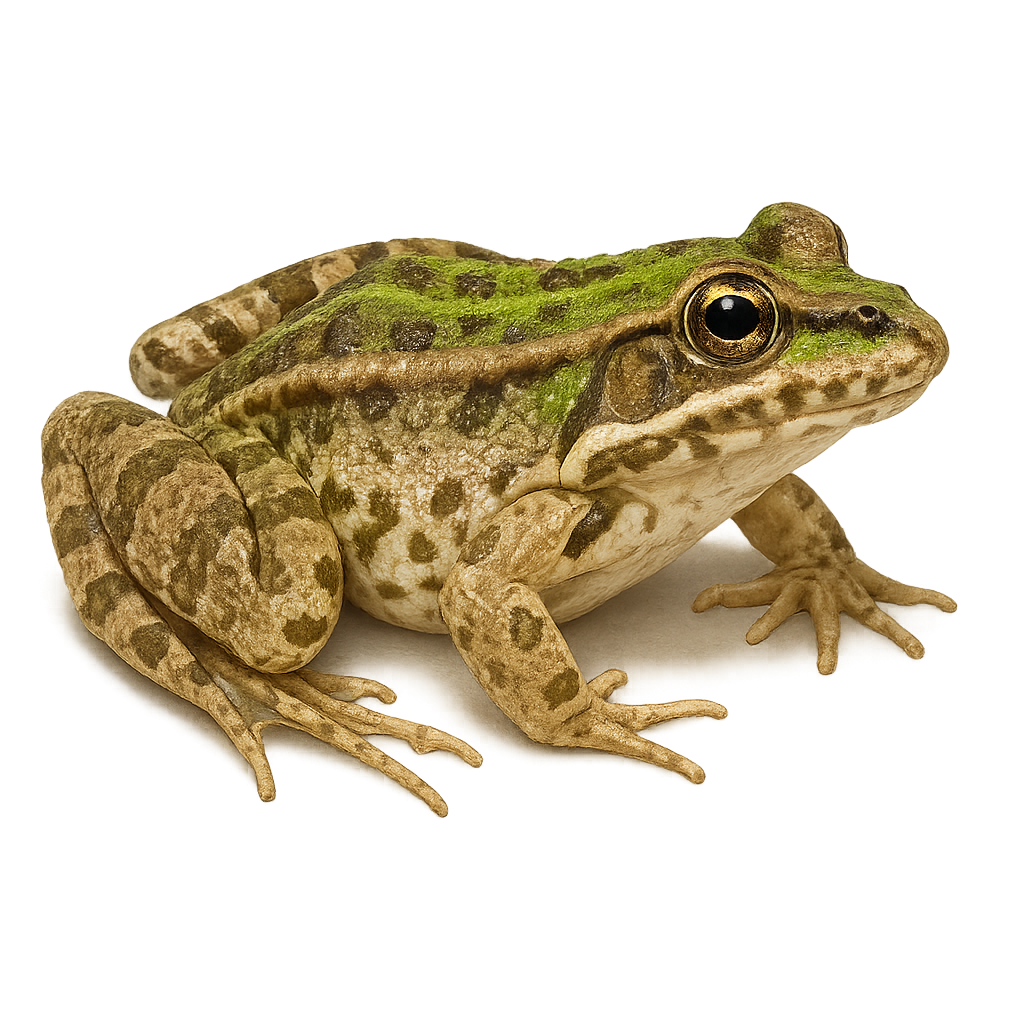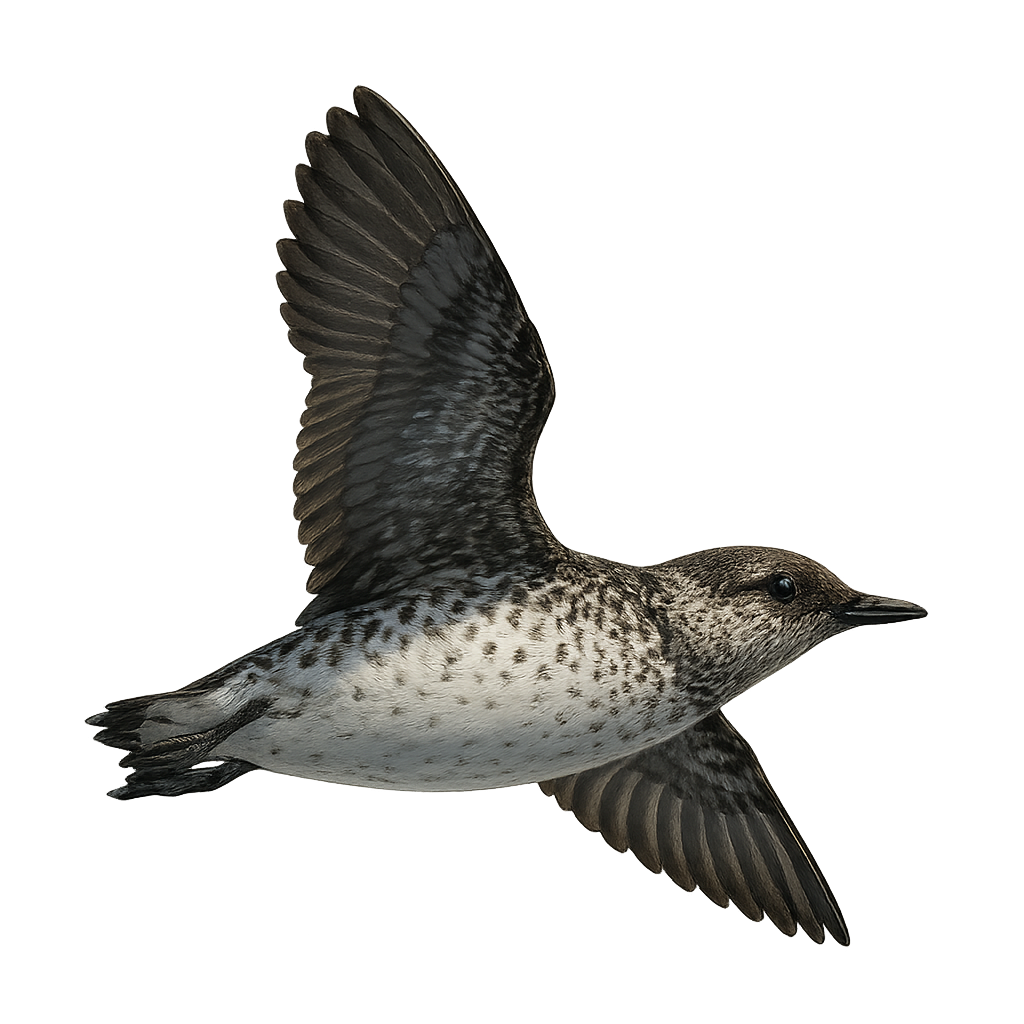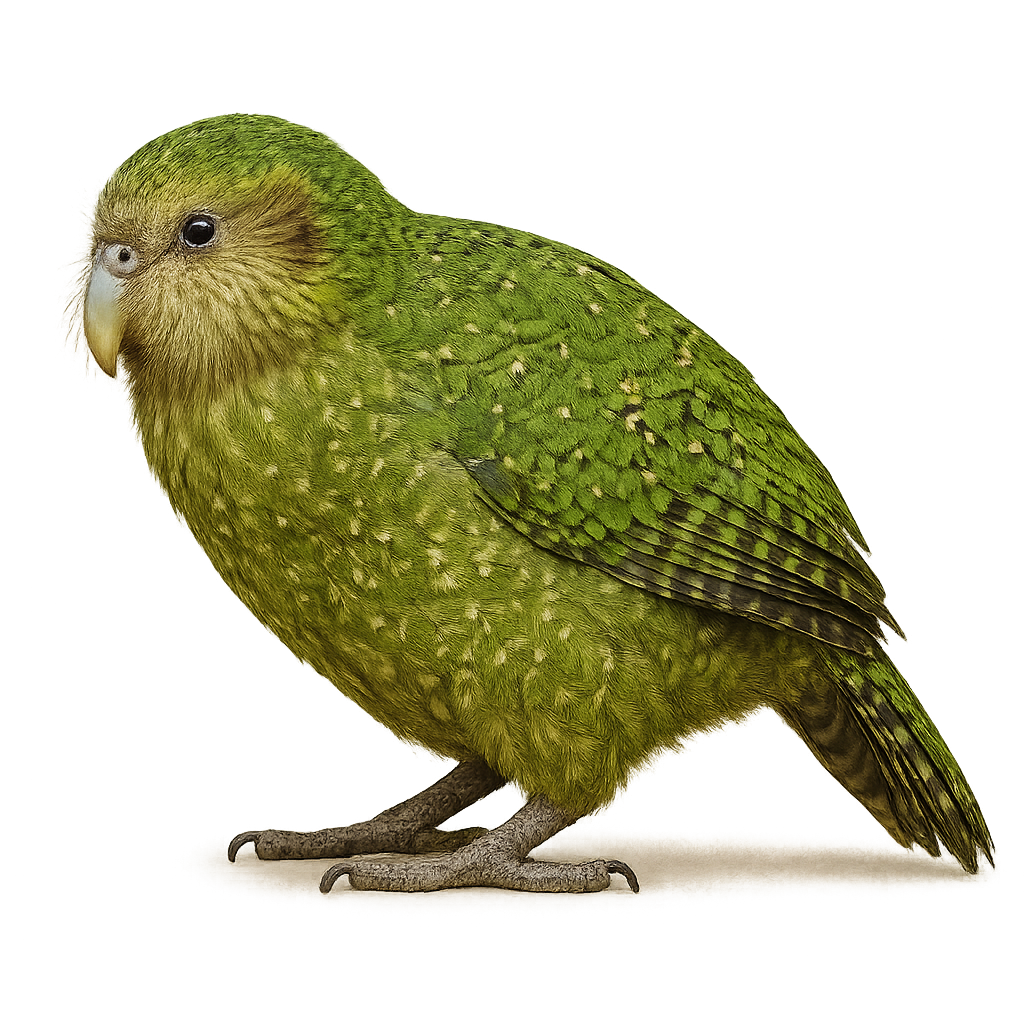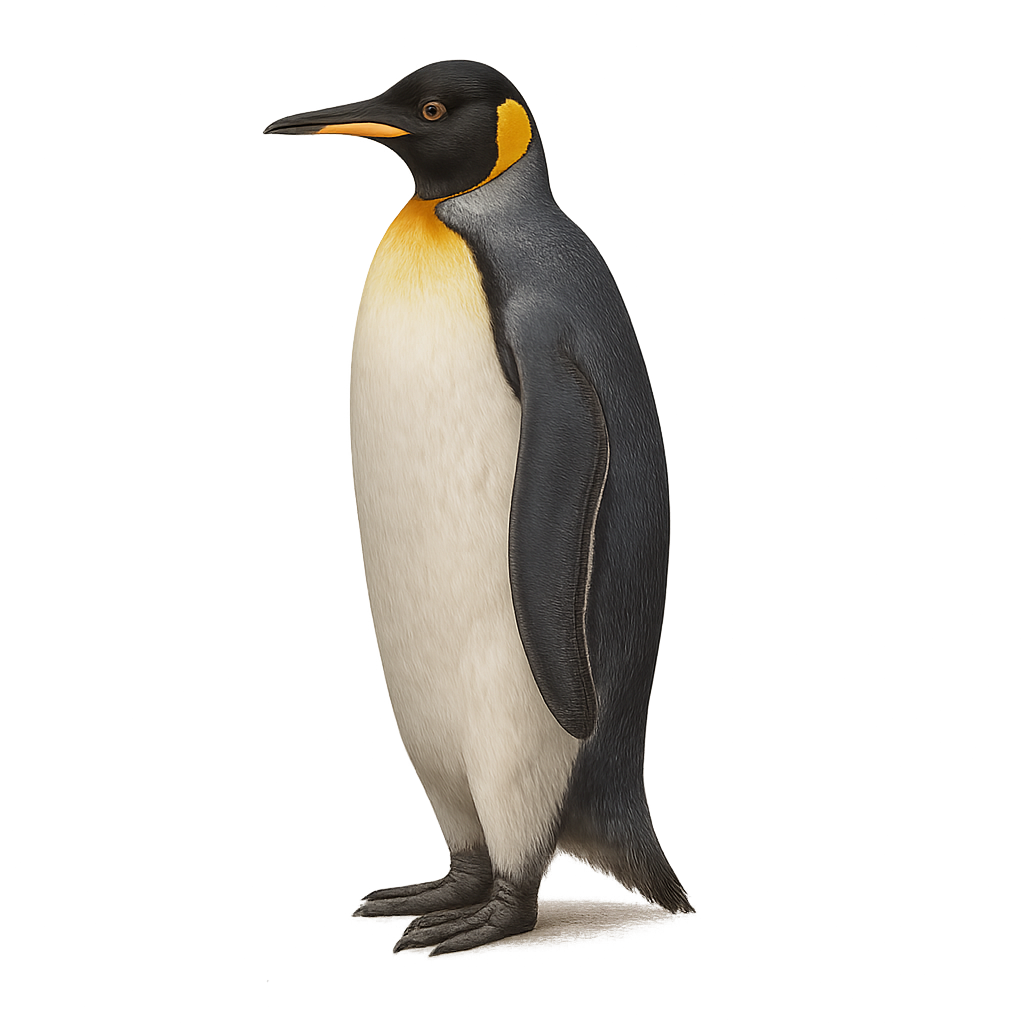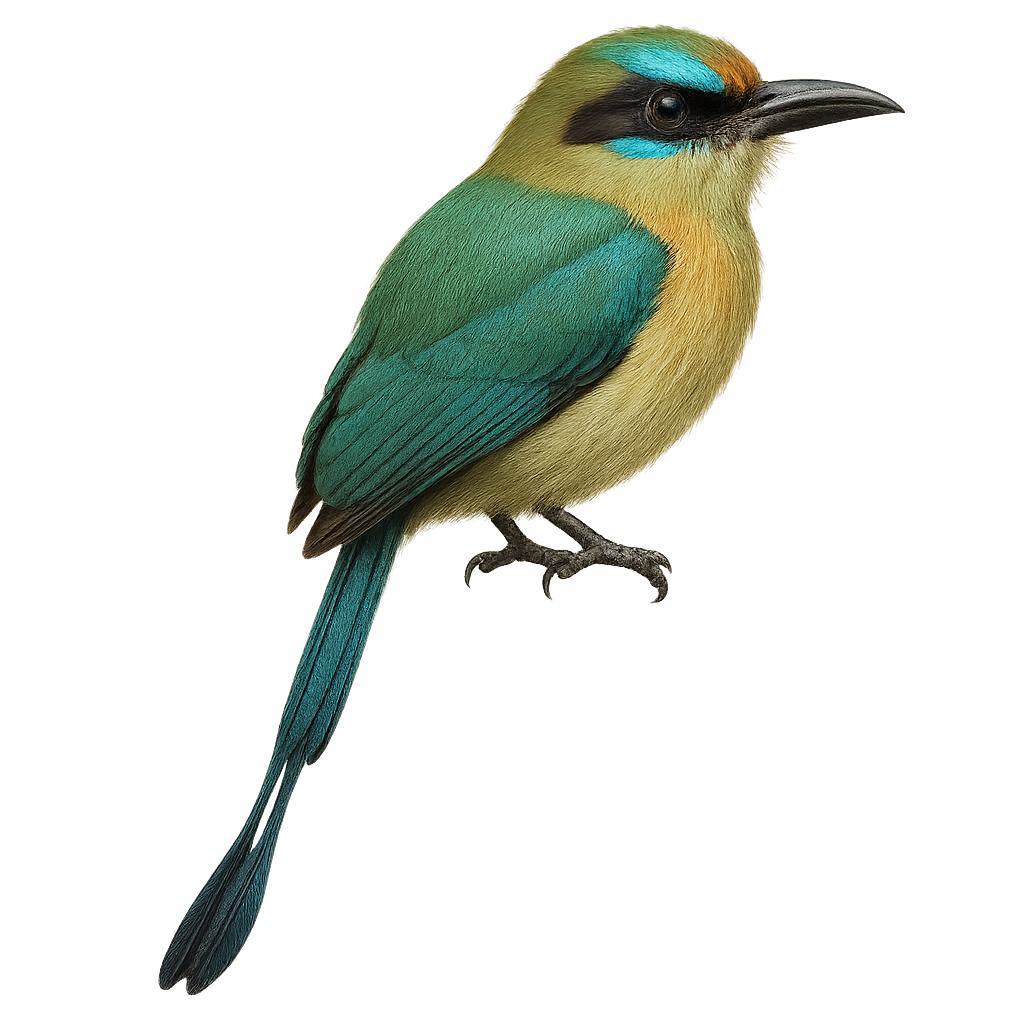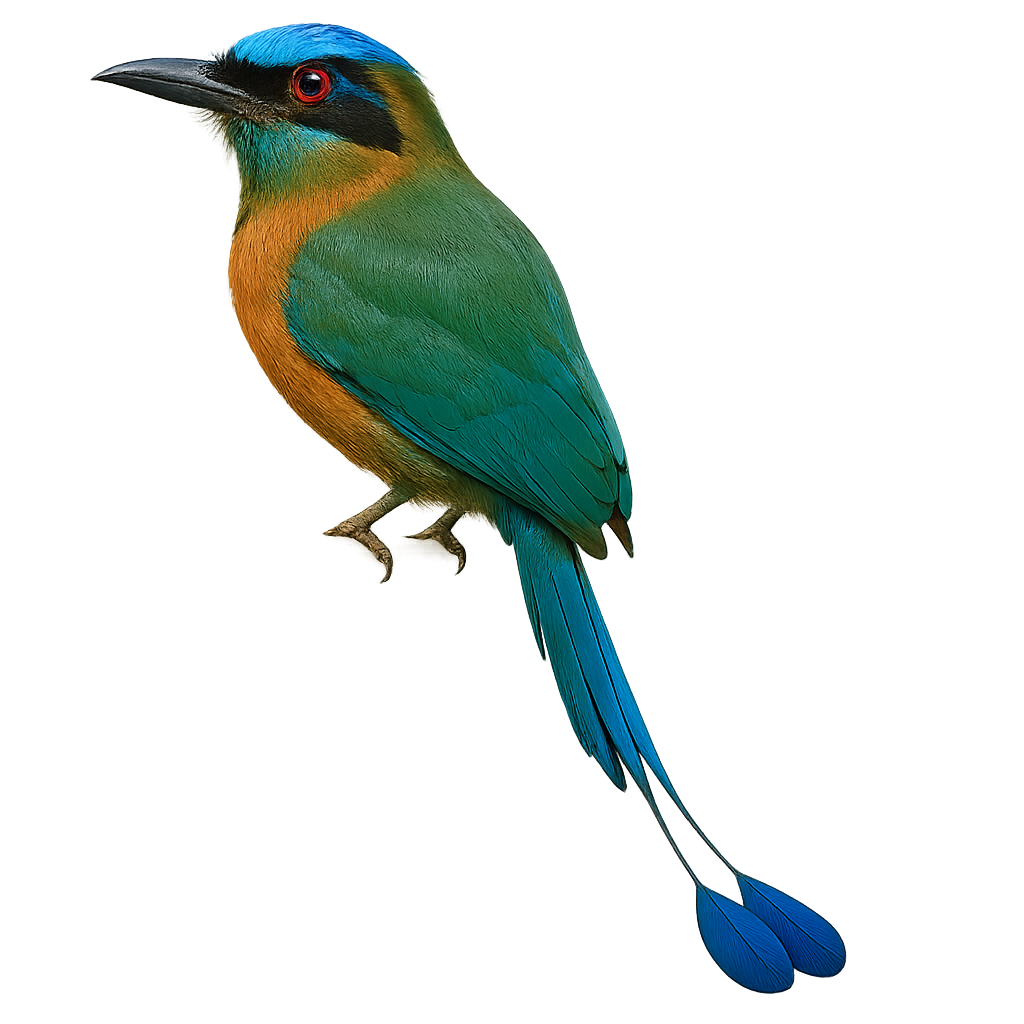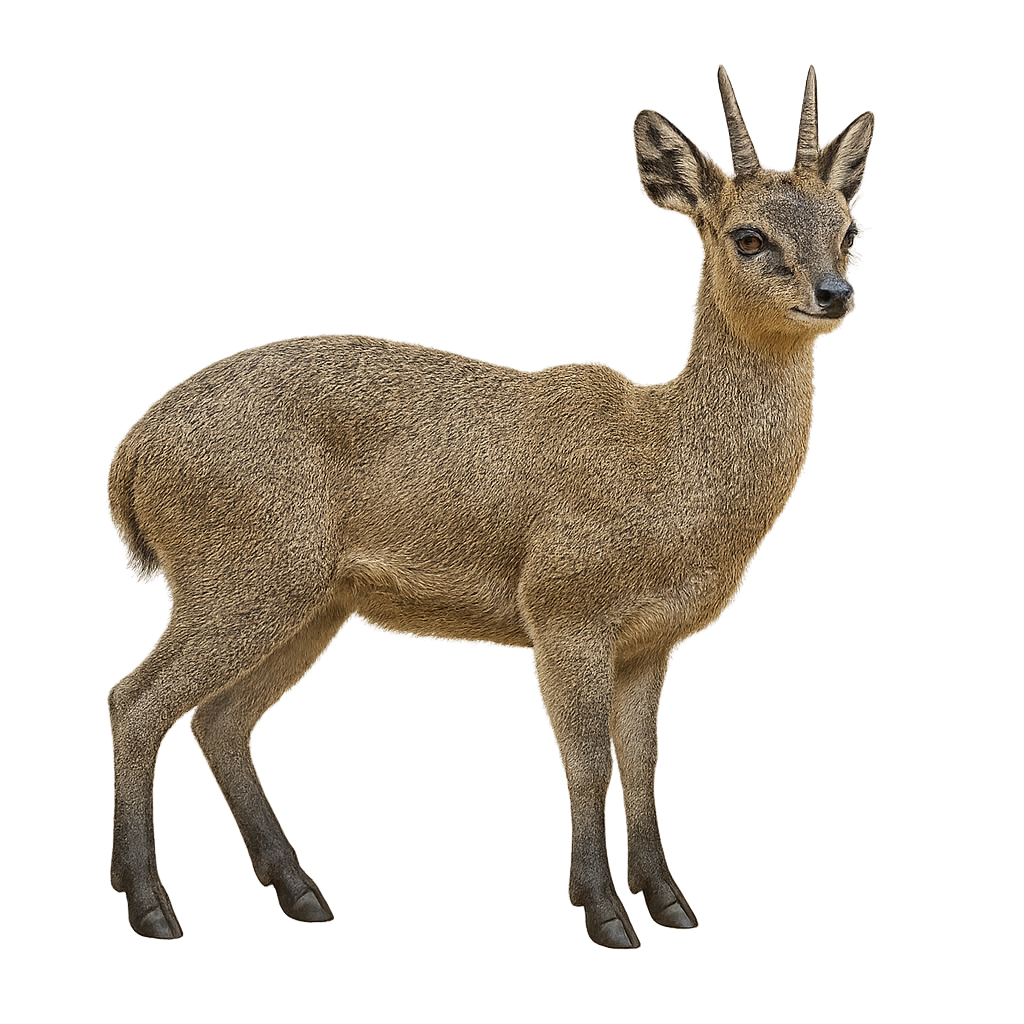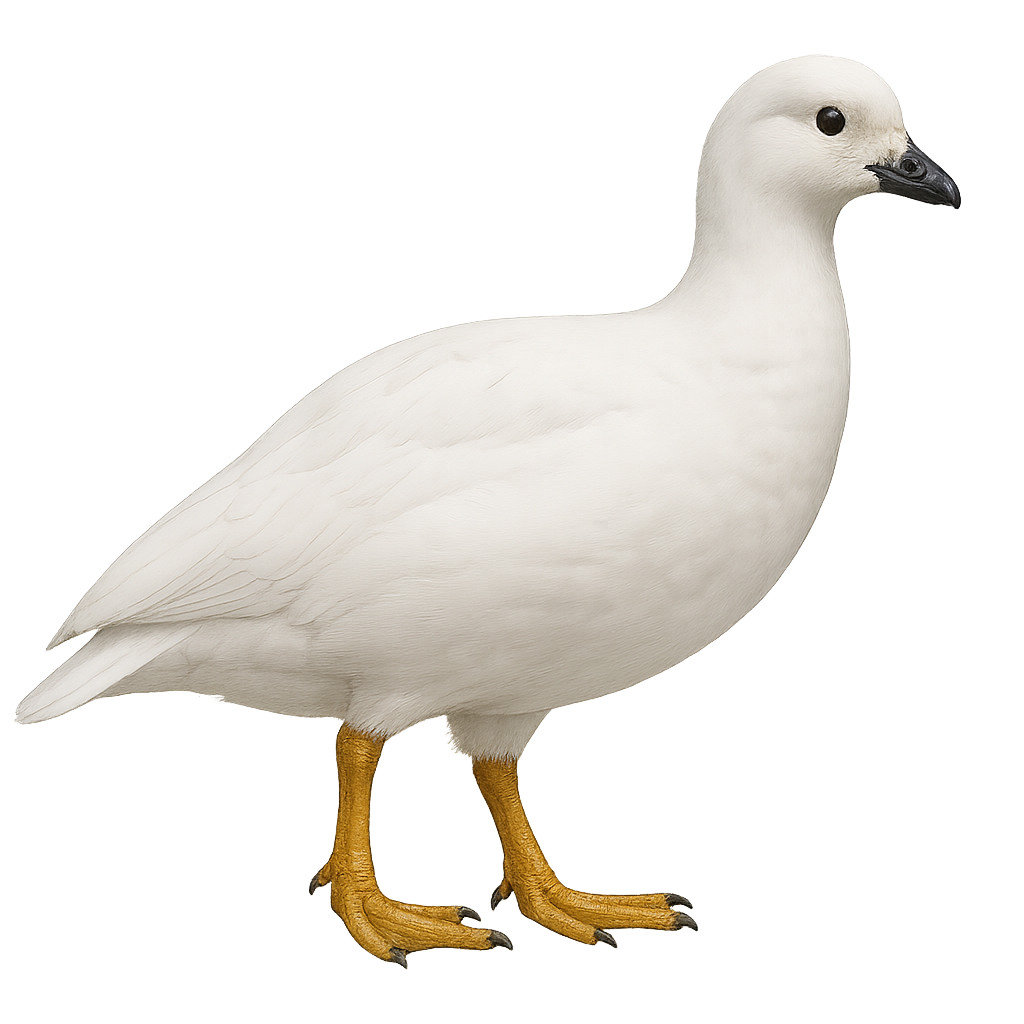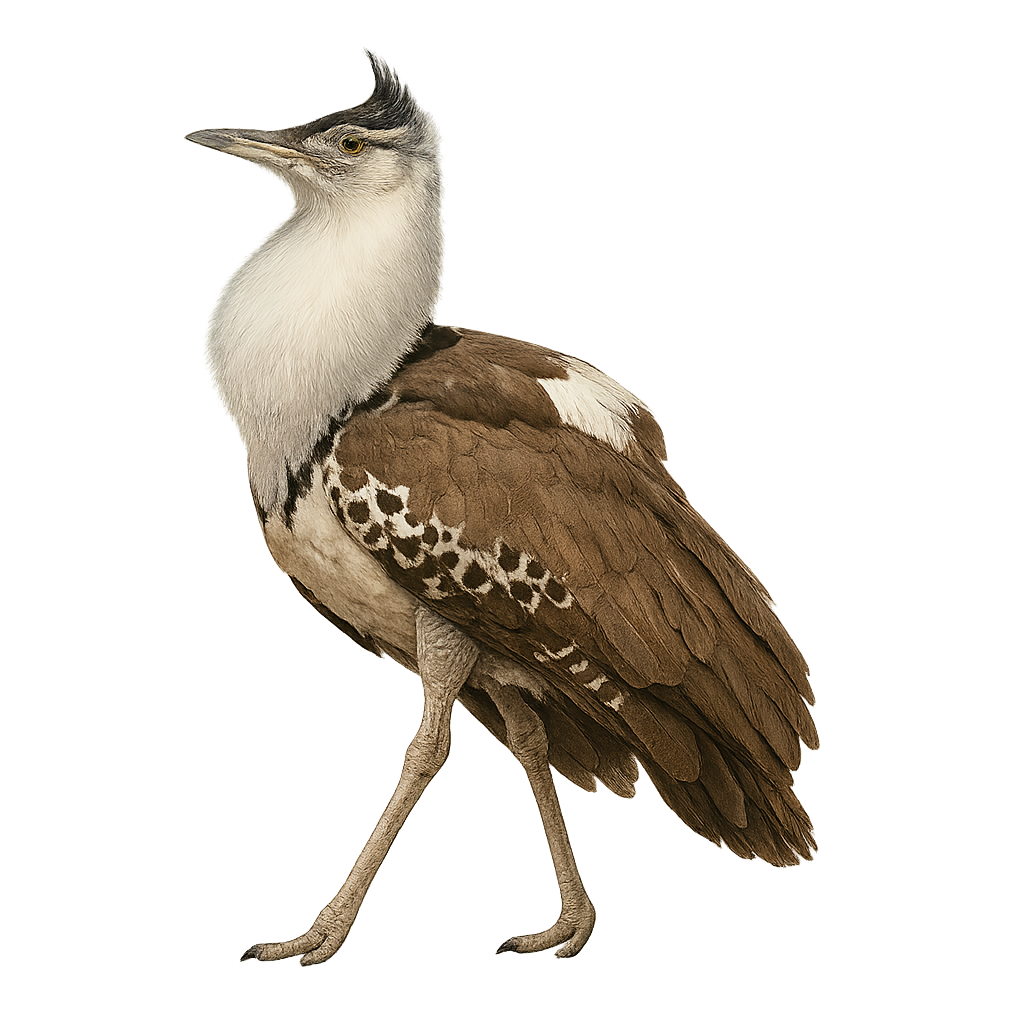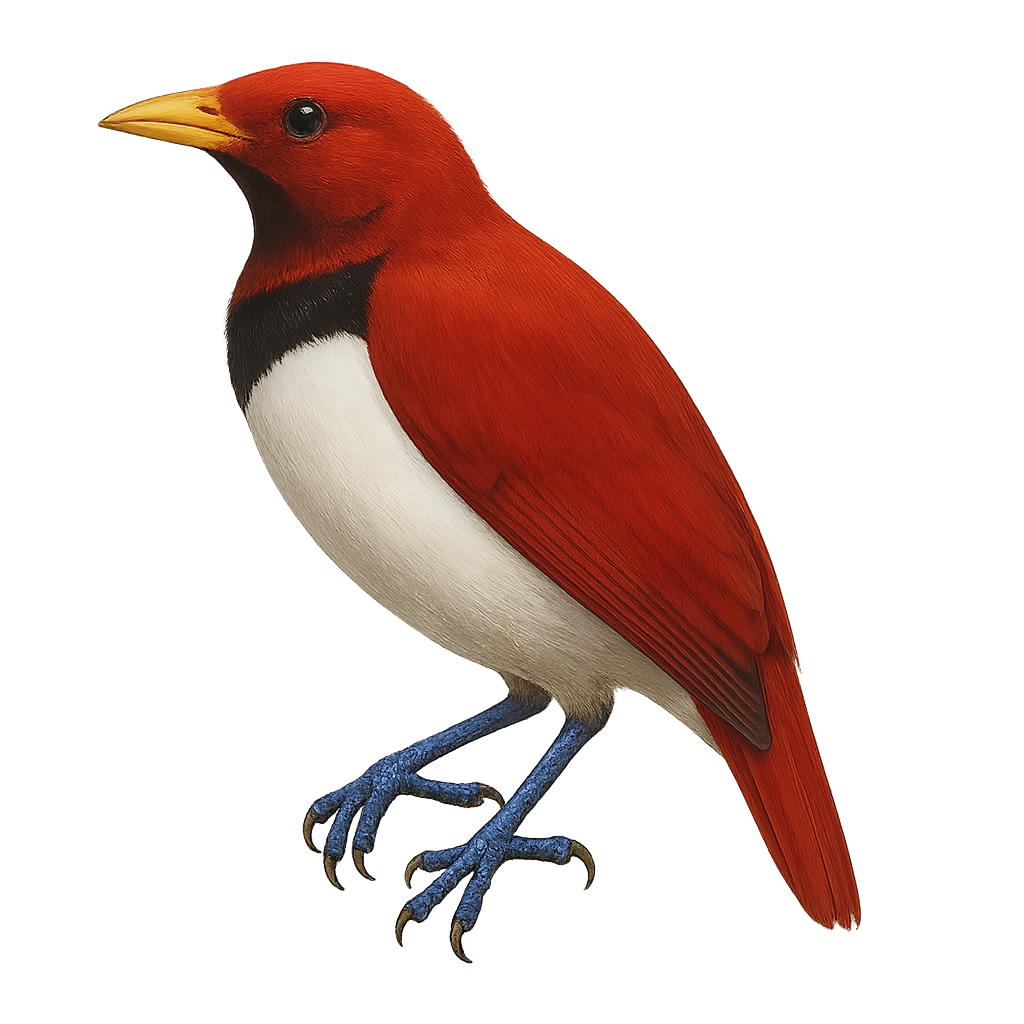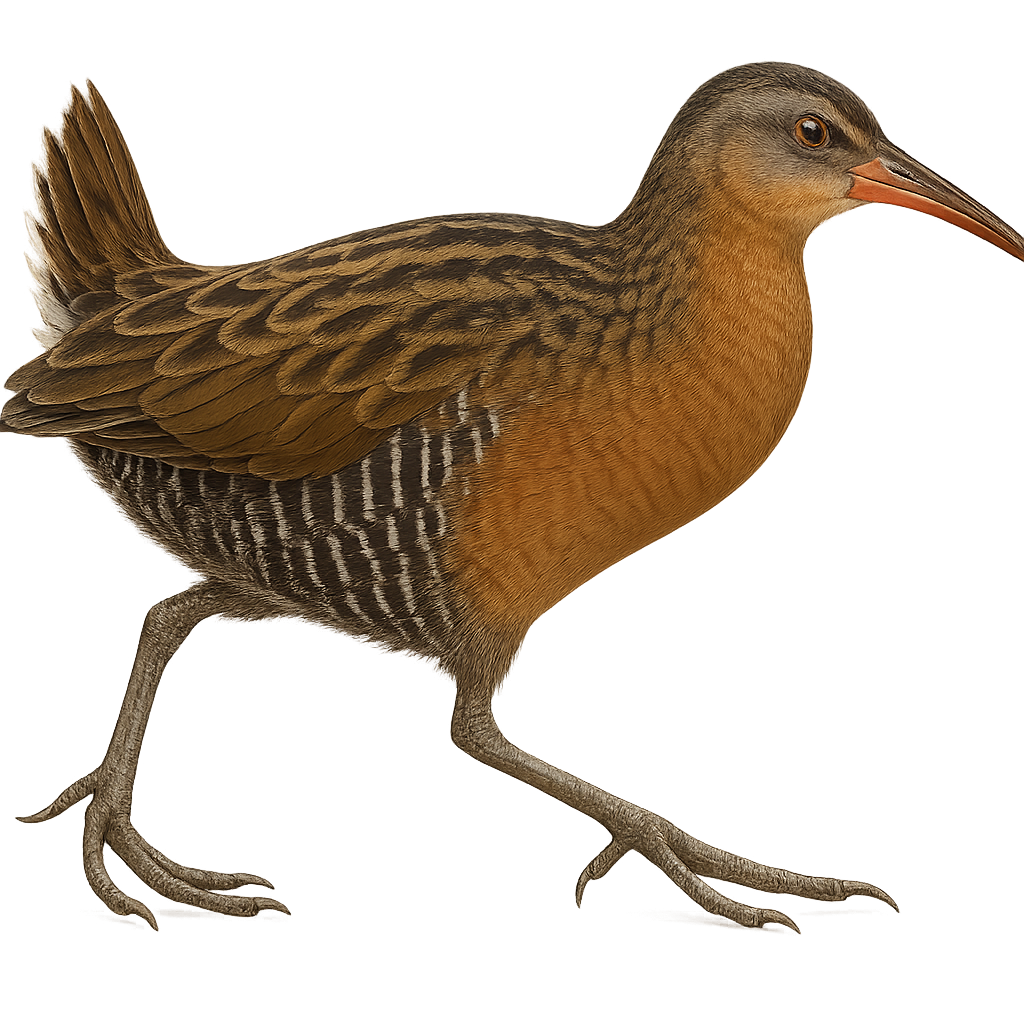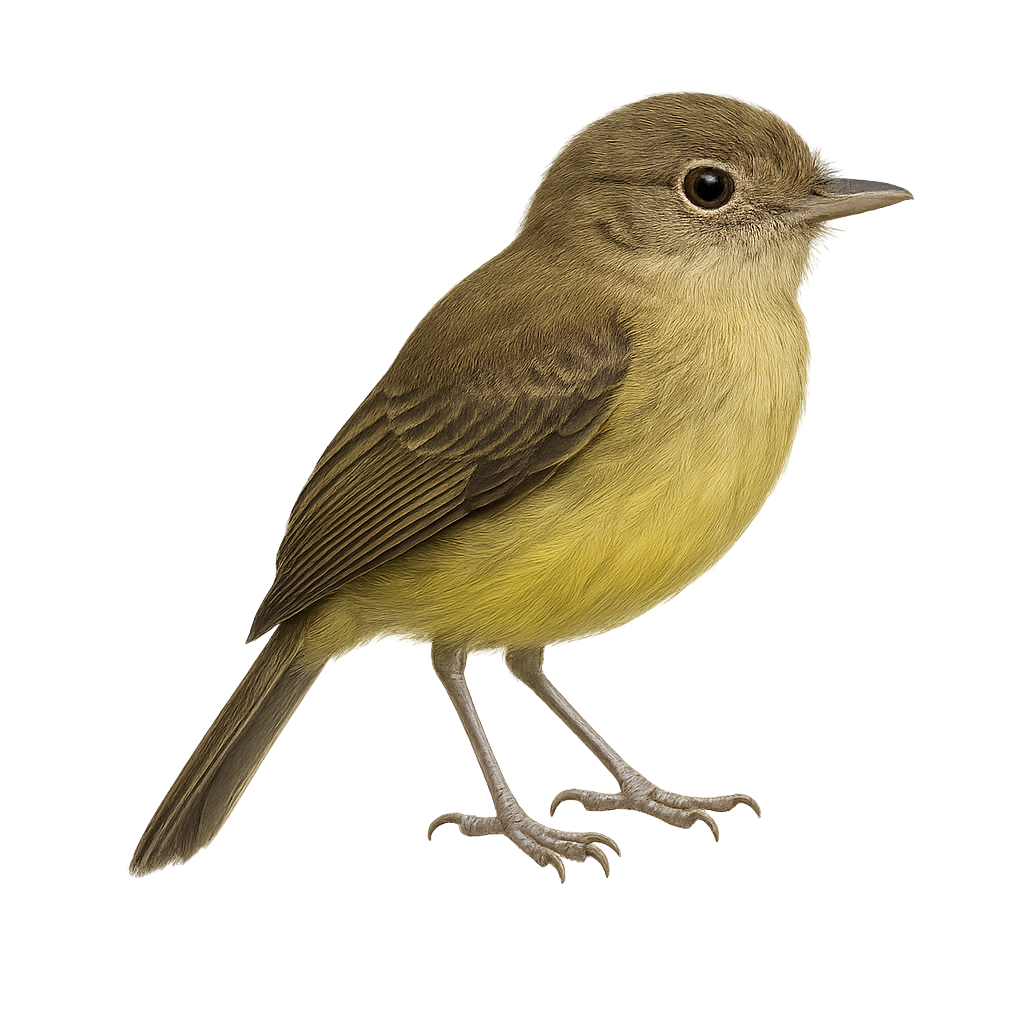The Knight Anole, or Anolis equestris, is a large lizard native to Cuba, although it has been introduced to parts of Florida. It can grow up to 50 cm in length, including the tail, and is known for its bright green color, which can vary depending on its mood or environment. This arboreal lizard prefers humid tropical forests where it primarily feeds on insects, small birds, and fruits. It has a broad head and mobile eyes, allowing for effective peripheral vision. Males have a prominent dewlap used to impress females or intimidate rivals.
The Knobbed Hornbill, Rhyticeros cassidix, is a striking bird native to the tropical forests of Sulawesi, Indonesia. Recognizable by its large yellow bill topped with a bright red casque, this bird has a glossy black plumage with a white throat in males and blue in females. Measuring up to 90 cm in length, it is one of the largest hornbills. It primarily feeds on fruits but also consumes insects and small animals. The Knobbed Hornbill plays a crucial role in seed dispersal, aiding forest regeneration. Unfortunately, it is threatened by deforestation and hunting, leading to its classification as a vulnerable species by the IUCN.
The Kemp's Hornbill, or Tockus kempi, is a fascinating bird belonging to the Bucerotidae family. This medium-sized hornbill is primarily found in West Africa, particularly in dry forests and wooded savannas. It is distinguished by its contrasting black and white plumage and its impressive bill, often adorned with a characteristic casque. The Kemp's Hornbill is a diurnal bird, active mainly in the morning and late afternoon. It primarily feeds on fruits, insects, and occasionally small vertebrates. Its social behavior is interesting, as it often lives in small family groups. The breeding season varies by region but is generally influenced by the rainy season.
The kob, or Kobus kob, is a graceful and elegant antelope primarily found in West and Central Africa. Recognizable by its tawny coat, it has a lighter belly and white markings around the eyes and muzzle. Males boast magnificent lyre-shaped horns, while females lack them. These animals live in herds, often near water sources, and primarily graze on grasses. Their social behavior is complex, with males establishing territories during the breeding season. The kob is a keystone species in its ecosystem, playing a vital role in the food chain.
The king cobra is a large venomous snake in the family Elapidae, reaching 3–4 m in length, with olive-brown body and a lighter dorsal hood. It inhabits tropical forests, mangroves and wetlands, feeding mainly on other snakes, small mammals and birds. During breeding season, males engage in ritual combat and females build a leaf nest to lay 21–40 eggs.
The Kirk's Dik-dik is a small antelope, recognizable by its modest size and distinctive features, including its elongated snout and large, expressive eyes. Standing about 40 cm tall at the withers and weighing between 3 and 6 kg, it is one of the smallest members of the antelope family. Its coat is usually light brown or gray, with a paler belly and distinct facial markings. The Kirk's Dik-dik primarily inhabits savannas and wooded areas in East Africa, notably in Somalia, Kenya, Tanzania, and Ethiopia. It feeds mainly on leaves, fruits, and herbaceous plants. This small herbivore is mostly active at dusk and during the night, using its well-developed sense of smell to detect predators, emitting a characteristic call to alert other members of its group. The Kirk's Dik-dik is typically solitary or lives in small family groups. Although it is not currently threatened, it faces dangers such as habitat loss due to agricultural expansion and hunting.
The Komodo Dragon is a large carnivorous lizard, famous for its impressive size and strength. It typically measures between 2 and 3 meters in length and can weigh up to 70 kg. Its massive body is covered with scales, usually grayish-green, which helps it blend into its natural environment. The Komodo Dragon is found exclusively on a few islands in Indonesia, including Komodo, Rinca, Flores, and Gili Motang. This apex predator feeds on a variety of animals, from birds to mammals like deer, as well as carrion. It primarily hunts using its developed sense of smell, able to detect odors from several kilometers away. Due to its powerful bite and saliva filled with bacteria, the Komodo Dragon can incapacitate its prey and wait for it to succumb to infection before feeding. The species is listed as vulnerable, threatened by habitat loss, illegal hunting, and excessive tourism. Conservation efforts are in place to protect this unique creature and its habitat.
The King Eider, Somateria spectabilis, is a striking sea duck known for its distinctive plumage and lifestyle. The male boasts a colorful head with shades of blue, green, and orange, while the female has a more subdued brown plumage, ideal for nesting. These birds breed in Arctic and subarctic regions, often on remote coasts and islands. They primarily feed on mollusks and crustaceans, diving to capture them in cold waters. In winter, they migrate to more temperate areas, forming large flocks on coastal waters. Their social behavior is fascinating, with elaborate courtship displays and distinctive vocalizations.
The Koklass Pheasant, or Pucrasia macrolopha, is a medium-sized bird belonging to the Phasianidae family. It is primarily found in the mountainous forests of Asia, particularly in India, Pakistan, China, and Nepal. This pheasant is distinguished by its colorful plumage and long crest. Males display vibrant colors with intricate patterns, while females are duller, allowing them to camouflage more effectively. The Koklass Pheasant is a diurnal bird that feeds mainly on seeds, berries, and insects. It is known for its territorial behavior, especially during the breeding season. Although relatively tolerant of human presence, it prefers remote and undisturbed areas.
The Kalij Pheasant, or Lophura leucomelanos, is an elegant bird from the Phasianidae family, native to the forests of South Asia. It is recognizable by its glossy black plumage in males, with metallic sheen, and its distinctive crest. The female, more discreet, has a brown speckled plumage. These birds prefer dense forest habitats, where they feed mainly on seeds, insects, and small invertebrates. They are often seen in small family groups. Although generally suspicious, they can become accustomed to human presence in protected areas. Their call is a sharp, piercing cry, often heard at dawn and dusk.
The Kestrel is a small raptor from the falcon family, easily recognizable by its light brown plumage and dark spots that adorn its back. It measures about 30 to 35 cm in length, with a wingspan of 70 to 80 cm, and weighs between 150 and 200 g. The adult male has more colorful plumage, with shades of gray and black bands on the tail, while the female has a duller, brownish plumage. This falcon is common throughout Europe, Asia, and North Africa, where it primarily inhabits fields, meadows, heathlands, and even urban areas. The Kestrel feeds mainly on small mammals, insects, reptiles, and sometimes smaller birds. It is especially known for its hovering flight technique, where it remains suspended in the air by rapidly beating its wings before diving to capture prey. While the species is not currently endangered, it faces threats such as habitat loss, reduced prey populations, and disruption by human activities.
The Killdeer is a medium-sized bird, easily identifiable by its two distinctive black bands across the chest and its piercing call. It often frequents open areas such as beaches, fields, and grasslands. This bird is very active and uses an ingenious distraction technique to keep predators away from its nest, pretending to be injured to draw attention. The Killdeer is a partial migrant, moving south in winter. It primarily feeds on insects, worms, and crustaceans, which it finds by foraging on the ground. Its ability to adapt to various habitats allows it to thrive in many regions of North America.
The Kurtmueller's Frog is an amphibian species belonging to the Ranidae family, primarily found in Mediterranean regions such as Greece and Albania. This medium-sized frog has smooth skin with a coloration ranging from green to brown, often marked with dark spots. It prefers aquatic habitats like ponds, rivers, and marshes. Known for its distinctive call, the Kurtmueller's Frog uses it mainly during the breeding season to attract mates. It feeds primarily on insects and other small invertebrates. Although relatively common within its range, it is sensitive to water pollution and habitat destruction.
The Kittlitz's Murrelet, or Brachyramphus brevirostris, is a discreet seabird belonging to the Alcidae family. It is primarily found in the cold waters of Alaska and the Russian Far East. This bird is distinguished by its marbled brown breeding plumage and white belly, while its winter plumage is more subdued with grayish tones. Its compact size and short bill are well-suited to its marine lifestyle. It primarily feeds on small fish and marine invertebrates. The Kittlitz's Murrelet is known for its ability to nest far from the coast, often on rocky slopes or cliffs, making it difficult to observe. Its population is vulnerable due to climate change and marine pollution.
The Kakapo is a nocturnal and terrestrial parrot, easily recognizable by its moss-green plumage and large wings, although this bird cannot fly. It measures about 60 cm in length and weighs between 2 and 4 kg, making it the heaviest parrot. Its plumage is mainly green, with yellow and brown hues that help it blend into its natural environment. The Kakapo is found exclusively in New Zealand, where it prefers dense forests and mountainous areas. It is herbivorous and feeds on plants, fruits, seeds, and roots. Due to its inability to fly, it has developed excellent climbing skills and primarily moves by walking. The species has been severely threatened over the centuries by predation from introduced mammals and habitat loss. Today, the Kakapo is an extremely rare and critically endangered bird, with intense conservation efforts focused on protecting the remaining individuals.
The Kangaroo is an iconic marsupial, famous for its large size, powerful hind legs, and long tail. It typically measures between 1 and 1.8 meters in length, with a tail length of 80 to 100 cm, and can weigh between 18 and 90 kg, depending on the species. Its coat varies depending on the species but is generally gray or red, with dense fur that protects it from the extreme temperatures of Australia. The Kangaroo is an excellent jumper, capable of covering large distances with its powerful hind legs and its tail, which serves as a counterbalance when it moves. Herbivorous, it primarily feeds on grass, leaves, and young shoots. Kangaroos primarily inhabit open plains, forests, and savannahs in Australia. They are social animals, often living in groups called "mobs," although they can also be solitary. While the species is not endangered, it is sometimes threatened by habitat loss, bushfires, and competition with livestock.
The Kiwi is a bird endemic to New Zealand, famous for its brown, fluffy plumage, small size, and long straight bill. It measures about 40 to 50 cm in height, with a wingspan of 60 to 80 cm, and weighs between 1 and 4 kg depending on the species. The Kiwi is one of the most distinctive birds in the world due to its unique appearance: it has small wings that do not allow it to fly, a long delicate nose, and short legs adapted for its terrestrial life. It primarily inhabits the forests, woods, and grasslands of New Zealand, where it feeds on earthworms, insects, fruits, and roots. The Kiwi is a nocturnal bird, feeding primarily at night and being particularly vulnerable to introduced predators such as rats, mustelids, and dogs. It is also threatened by the loss of its natural habitat, and several species of Kiwi are critically endangered. Active conservation, such as nest protection and predator elimination, is essential to ensure the survival of these iconic birds.
Koala
Phascolarctos cinereus
The Koala is an iconic tree-dwelling marsupial from Australia, easily recognizable by its grey-silver fur, large round ears, and heart-shaped black nose. It measures about 60 to 85 cm in length and weighs between 4 and 15 kg, with males generally being larger than females. The Koala has powerful claws adapted for its tree-dwelling lifestyle, spending almost its entire life in trees and feeding primarily on eucalyptus leaves. Its diet is very specific, and while eucalyptus is an abundant food source, it is also toxic to most other animals, providing the Koala with some degree of protection from predators. The Koala is a nocturnal and solitary animal, spending the majority of the day sleeping in trees, seeking refuge in Australia's forested areas. It is a symbol of Australian wildlife, but its habitat is threatened by deforestation, bushfires, and disease, which has led to a decline in its population. Conservation efforts are underway to protect this marsupial and its natural habitat.
The King penguin is the second largest species of penguin, after the emperor penguin. It primarily lives on subantarctic islands and the coasts of Antarctica. This penguin is easily recognizable by its distinctive black and white plumage and its bright orange coloring on the sides of the head and neck. It primarily feeds on fish, krill, and squid, which it captures by diving into the water. The King penguin is a social species, living in dense colonies, and is known for its spectacular courtship displays.
The Keel-billed Motmot, or Electron carinatum, is a fascinating bird native to the tropical forests of Central America. It is distinguished by its vibrant green plumage, shades of blue, and racket-shaped tail. Its beak is robust and slightly curved, ideal for catching insects and small reptiles. This bird prefers dense habitats where it can effectively camouflage itself. The motmot is known for its discreet behavior and ability to remain still for long periods, making it difficult to spot. It plays an essential role in the ecosystem by controlling insect populations and dispersing seeds.
The Houtouc Motmot is a colorful and fascinating bird, primarily found in the tropical forests of Central and South America, notably in Costa Rica, Panama, and Colombia. It measures about 40 cm in length and is easily recognized by its vibrant plumage, often dominated by shades of blue, green, and orange. What particularly distinguishes this bird are its tail feathers, which are long and feature a characteristic fan at the tips. The Houtouc Motmot is a small predator, feeding primarily on insects, small reptiles, and sometimes fruits. It is often seen perched on low branches, where it watches its surroundings in search of prey before diving quickly to catch it. Although often solitary or in small families, it emits a piercing call to signal its presence. The species is not currently endangered, but it is sometimes threatened by deforestation and the loss of its natural habitat.

The Nestor superbe is a large parrot endemic to New Zealand, easily recognizable by its bright green plumage and reddish-edged feathers on its neck and under its wings. It measures about 48 cm in length and weighs between 800 and 1,200 g. This parrot is one of the most intelligent of its kind, capable of using tools to solve complex problems and adapt to a variety of environments. The Nestor superbe is omnivorous and opportunistic, feeding on fruits, roots, seeds, small animals, as well as carcasses of dead animals. It is particularly known for its curious and sometimes destructive behavior, earning it a reputation as a "thief" in some areas. The Nestor superbe primarily inhabits the alpine mountains of the South Island of New Zealand, where it resides at high altitudes. While the species is protected, it remains vulnerable to habitat loss and human threats such as trapping and vehicle collisions. The Nestor superbe population has declined over the years, but conservation efforts are underway to ensure its survival.
The Nestor meridionalis, commonly known as the Kea, is a parrot endemic to New Zealand. Known for its intelligence and curiosity, the Kea is often seen interacting playfully with its environment. It has predominantly olive-green plumage with flashes of red under its wings, making it easily identifiable in flight. Primarily inhabiting alpine areas, it is well adapted to cold and harsh conditions. Unfortunately, the Kea is classified as a vulnerable species due to habitat loss and human threats. Its ability to solve complex problems and its social behavior make it a fascinating subject of study for ornithologists.
The klipspringer is a small African antelope known for its agility on rocky terrains. Standing about 50 cm at the shoulder and weighing between 8 and 18 kg, it has a dense, coarse coat, often brownish-grey, which helps it blend into its surroundings. Its hooves are adapted to grip rocky surfaces, allowing it to move easily across cliffs and escarpments. Klipspringers typically live in pairs or small family groups and are highly territorial. They primarily feed on leaves, fruits, and flowers and can survive without water for extended periods, deriving necessary moisture from their diet.
The Kelp Goose, or Chloephaga hybrida, is a medium-sized waterfowl belonging to the Anatidae family. It is primarily found along the rocky coasts and beaches of the Falkland Islands and Patagonia. Males display a striking white plumage, while females have a brownish hue with black stripes. These birds are often seen in pairs or small family groups. Their diet mainly consists of algae and aquatic plants. Although generally tolerant of humans, it is advisable to maintain a respectful distance to avoid disturbing them. Their vocalizations are subtle, often limited to soft whistles.
The Kermode Bear, also known as the "spirit bear" or "white-furred bear," is a rare subspecies of the American Black Bear. It measures between 1.2 and 1.8 meters in length and weighs between 70 and 250 kg. What particularly distinguishes the Kermode Bear is its coat, which can vary from black to creamy white, although the majority of these bears have black fur. This subspecies primarily lives in the humid forests of British Columbia, Canada, and feeds mainly on fruits, berries, fish, and small mammals. The Kermode Bear is typically solitary and inhabits remote areas. Although it is relatively rare, it is not considered to be in immediate danger, though it faces threats from habitat loss and other human-related activities.
The kori bustard is one of the largest flying birds in Africa, with predominantly gray-brown plumage and distinctive black and white patterns on its wings. It primarily inhabits savannas and dry grasslands, feeding on insects, small vertebrates, and seeds. Males are significantly larger than females, weighing up to 20 kg. During the breeding season, males perform impressive displays to attract females. Although capable of flight, the kori bustard prefers walking and running. It is often solitary or found in small groups. Its population is declining due to hunting and habitat loss, but it remains relatively widespread in some areas.
The King Bird-of-paradise, Cicinnurus regius, is a captivating bird from the Paradisaeidae family, native to the tropical forests of New Guinea and surrounding islands. This small bird, measuring about 16 cm, is renowned for its vibrant plumage and spectacular courtship displays. The male sports bright red plumage with metallic green feathers on the chest and two long spiral-shaped tail feathers. The female, more subdued, has brownish plumage. The King Bird-of-paradise is a solitary bird, except during the breeding season when the male performs intricate dances to attract the female. It primarily feeds on fruits and insects. Although its habitat is threatened by deforestation, it is currently classified as "least concern" by the IUCN.
The King Rail, Rallus elegans, is a medium-sized waterbird belonging to the Rallidae family. It is characterized by its reddish-brown plumage, black and white barred flanks, and slightly curved long bill. Mainly found in the freshwater marshes of North America, it is often difficult to spot due to its secretive behavior and dense habitat. This bird is an excellent swimmer and primarily feeds on aquatic insects, crustaceans, and small fish. Although its call is powerful and distinctive, it is rarely heard outside the breeding season. Habitat conservation is crucial for its survival, as it is vulnerable to wetland destruction.
The Kaempfer's Tody-Tyrant is a small passerine bird belonging to the Tyrannidae family. It is endemic to southeastern Brazil, mainly in the humid forests of the state of Santa Catarina. This bird measures about 10 cm in length and is characterized by its olive-green back and yellow belly, with a gray head and a relatively broad bill. It is often seen in pairs or small groups, actively moving through the underbrush in search of insects. Its song is a soft, repetitive trill, often heard before the bird is seen. Due to deforestation, its habitat is threatened, leading to its classification as an endangered species by the IUCN.


